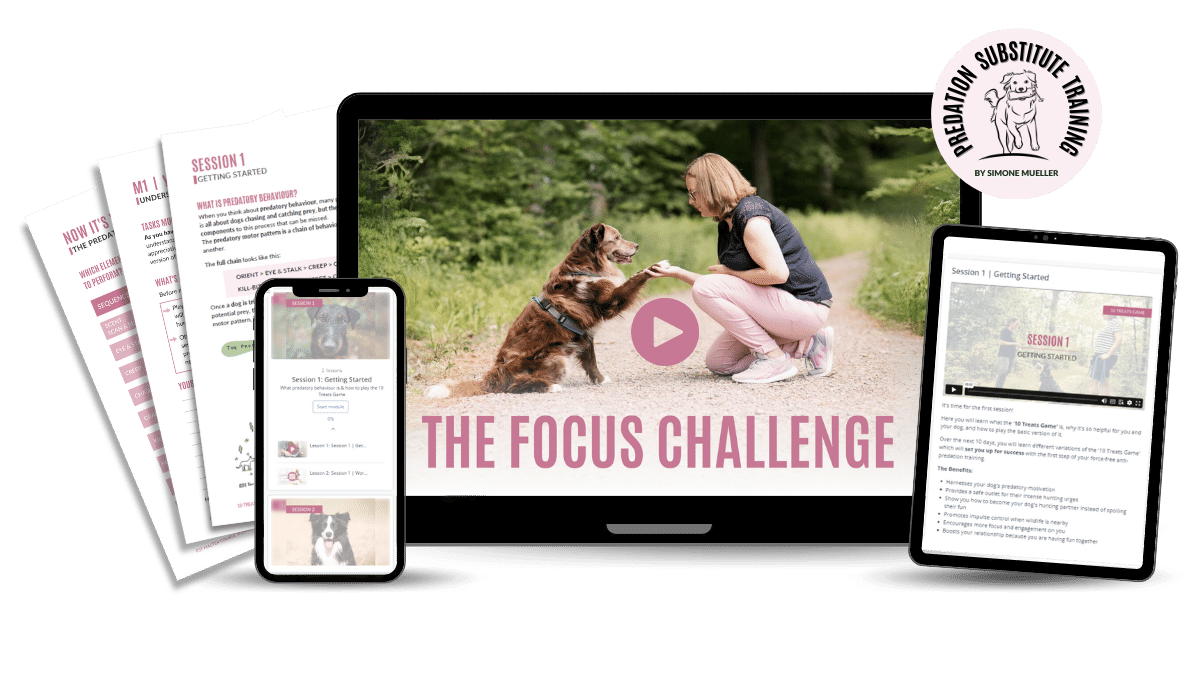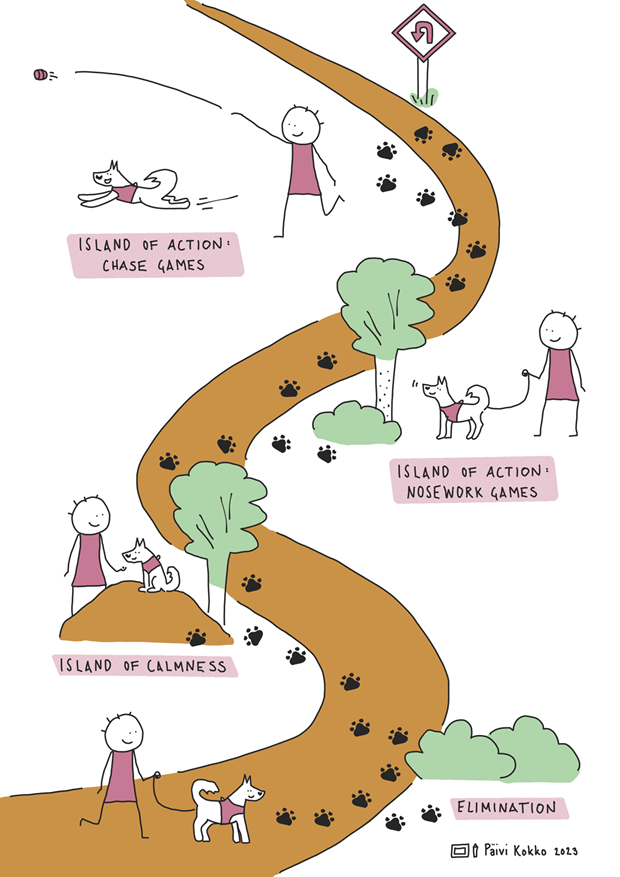In the last article, we looked at what impulse control is, and why it’s so important for your dog to have healthy reserves of it. This sets them up for successful training progression. We also learned that impulse control is a limited resource, and once your dog has drained their available impulse control, frustration and stress kick in. Impulse control can be used up quickly, so it’s important to recognise how you can stop your dog from using up all their reserves of it.
Below are several top tips for how you can save your dog’s impulse control, so they have more in reserve for when they really need to use some:

Tip 1: Set Up A Spot For Your Dog To Relieve Themselves
Try to find an area at the very start of your walk where your dog is able to relieve themselves. Encourage them to pee and poo in this designated area, before you start to progress further on your walk.
Of course, your dog is likely to also pee at other points further into your walk, but encouraging them to do so at the beginning reduces the urgency for them. Because they are not frantically searching for somewhere to relieve themselves, when they are desperate to go, this saves them some impulse control.
Eventually, your dog will recognise this as a place to head to when they need to relieve themselves which helps to create predictability for them, which also helps them to preserve their impulse control levels.
Tip 2: The First 10 Minutes Of Your Walk Are For Your Dog
As a general rule, the first 10 minutes of your walk should belong to your dog, so long as it’s safe to do so. During this time, try and avoid asking them to do anything which involves them using up any impulse control, such as walking on a loose lead, ignoring interesting scents, etc.
Trying to get your dog to hold themselves back enough to concentrate on you will rapidly diminish their impulse control levels, so by allowing them to have fewer expectations of them at the start of their walk, this sets them up for success later on. Your dog then has the opportunity to get all of their initial excitement and energy out of their system, which puts them in a better frame of mind for listening to any cues you give them.
Only after these 10 minutes have passed, should you consider asking them to do activities which drain their impulse control.
NOTE:
Always use a well-fitted harness when your dog is likely to be pulling on the lead to protect their delicate neck.
This in itself can save your dog impulse control, because if they are pulling on a normal collar/slip lead/etc this is likely to choke them, leading to higher frustration, and lower impulse control, which can make them pull more!

Tip 3: Avoid Circular Routes For Your Walks
Instead of walking in a circular route, it can be helpful to walk the same way out and back again.
This gives your dog the chance to explore new scents and sights on the first part of your walk, and because you are walking the same way back again, they will have already experienced most of the stimuli so it will not be as distracting or overwhelming for them on the way back.
Not only does this help your dog to remain calmer, and therefore more able to remain focused on you, but it also saves them plenty of impulse control too.
For more information about how to get your dog to remain focused on you, even around distractions, why not join us for ‘The Focus Challenge.’ CLICK HERE for more information!

Tip 4: Create Islands To Structure Your Walks
Structuring your walk into ‘islands of calmness’, and ‘islands of action’, helps to create predictability for your dog, because they always know what is going to happen when they reach a certain point on your walk.
Islands of calmness are places where you and your dog can observe the environment together and have calm interactions with each other, which helps to recharge their impulse control levels.
Whereas islands of action are places where fun physical activities take place.For example, when you reach a certain bench on your walk, you always sit down and do some calming exercises with your dog, like calmly sniffing for scattered treats on the ground. Or, when you reach the start of an open field, you play an exciting game together like fetching a prey dummy.
Giving your dog reliable expectations adds structure and routine to your walks, which can reduce anxiety and save the all-important impulse control!
Whenever possible, always make sure that your last island is a calming one, because this sets the tone for your dog that it’s time to wind down and relax now their walk is over. You can even do this when you get back to the car or back home for example, by scattering some treats on the ground or giving your dog a lickmat.

Tip 5: Plan Your Walking Route In Advance
When you are actively trying to save your dog some impulse control, it makes sense to avoid situations that you know will have the opposite effect of draining their impulse control instead.
Scenarios like walking past a house where there are likely to be barking dogs running alongside the fence, or walking past a busy school at home time where there are lots of children around, or even walking down busy streets with lots of people and traffic nearby will all quickly drain your dog’s impulse control.
By planning your walking route in advance before you leave home, you can choose to avoid these situations, thereby preserving your dog’s impulse control reserves.
Of course, you can’t plan for every eventuality, but trying to avoid impulse control draining situations where possible will be really beneficial to your dog.
Hopefully, you have found these top tips for preserving your dog’s impulse control helpful. I am sure once you start to integrate these suggestions into your daily walks, you will quickly be able to see the benefits they will bring.
If you’re looking for support in this journey, consider joining our ‘Focus Challenge; 15 Days to Achieve More Connection, Control & Freedom With Your High (Prey) Drive Dog’. Click HERE to learn more and take the first step together.
Happy training!
About me
Hey there, I’m Simone, and I’m a certified dog trainer and behaviour consultant (ATN.AG) based in Germany.
I’m passionate about helping dogs and their guardians around the world through force-free anti-predation training. That’s why I founded “Predation Substitute Training™ (PST)”, a unique and effective program that stops uncontrolled predatory chasing and provides safe outlets for your dog’s natural drive.
In my blog articles, I’d love to share my knowledge and experience with you and help you and your furry friend live a happier and safer life together!

